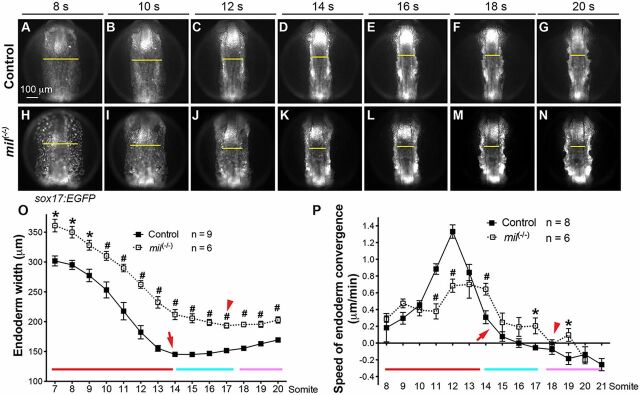Fig. 2.
S1pr2 is required for efficient endoderm convergence during segmentation. Epifluorescence time-lapse experiments were performed on control and mil mutant embryos (supplementary material Movie 1). (A-N) Snapshots of the anterior endoderm from the movies, at the stages indicated. Dorso-anterior views; yellow lines (equivalent length for embryos at the same stage), width of the anterior endodermal sheet, showing that the endodermal sheet was wider in mutant. (O,P) The average endoderm width (O) and convergence speed (P). Red, cyan and pink lines represent the periods of rapid convergence, little convergence and expansion, respectively. Arrows and arrowheads mark completion of convergence. *P<0.05; #P<0.01 versus control. Data are mean±s.e.m.

